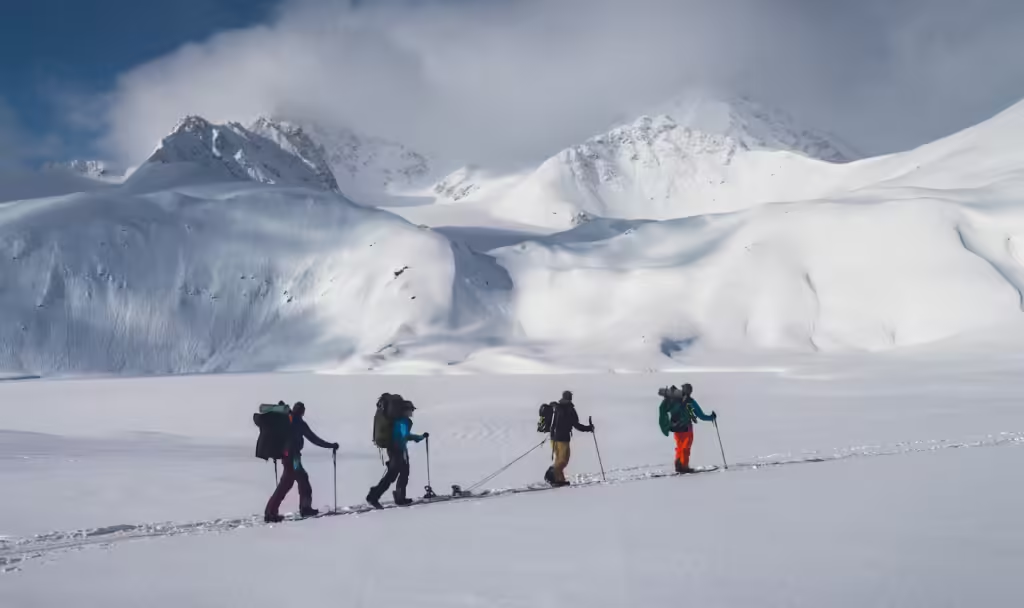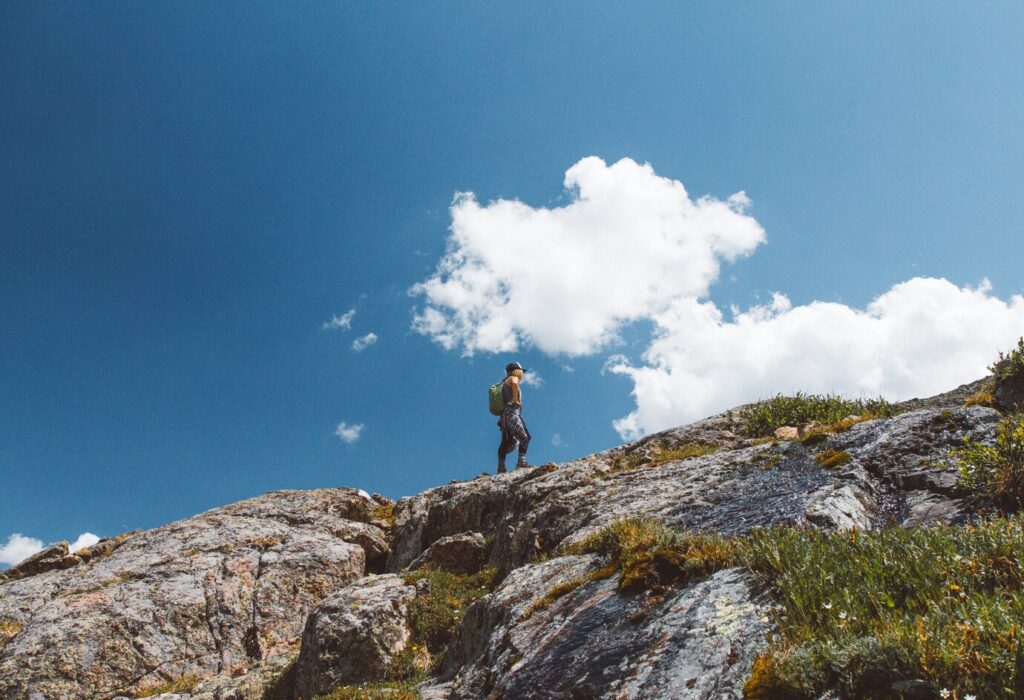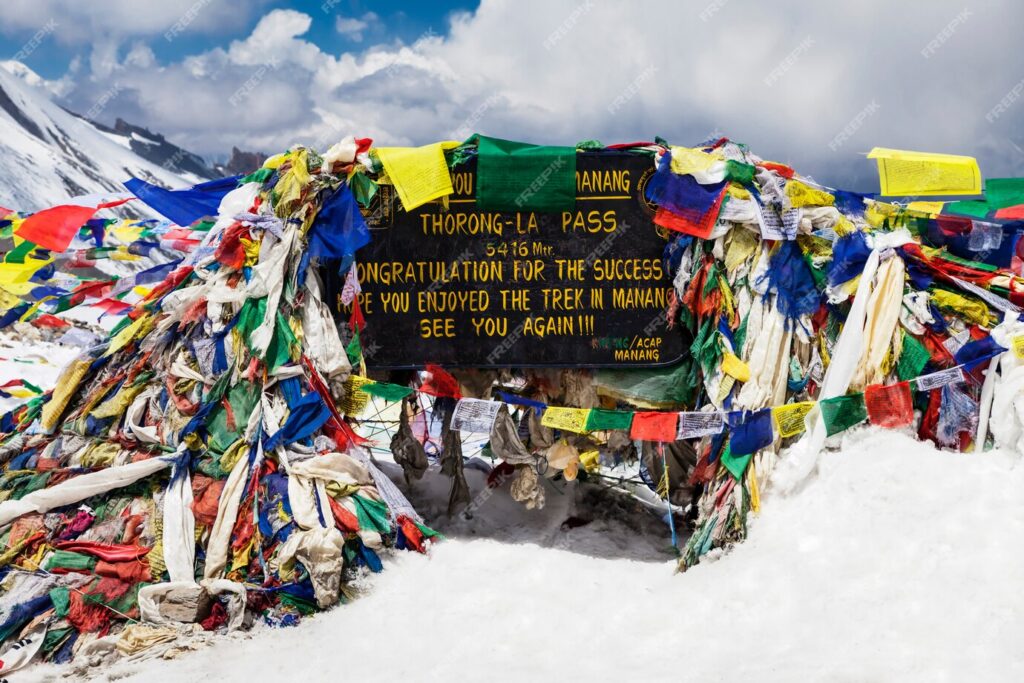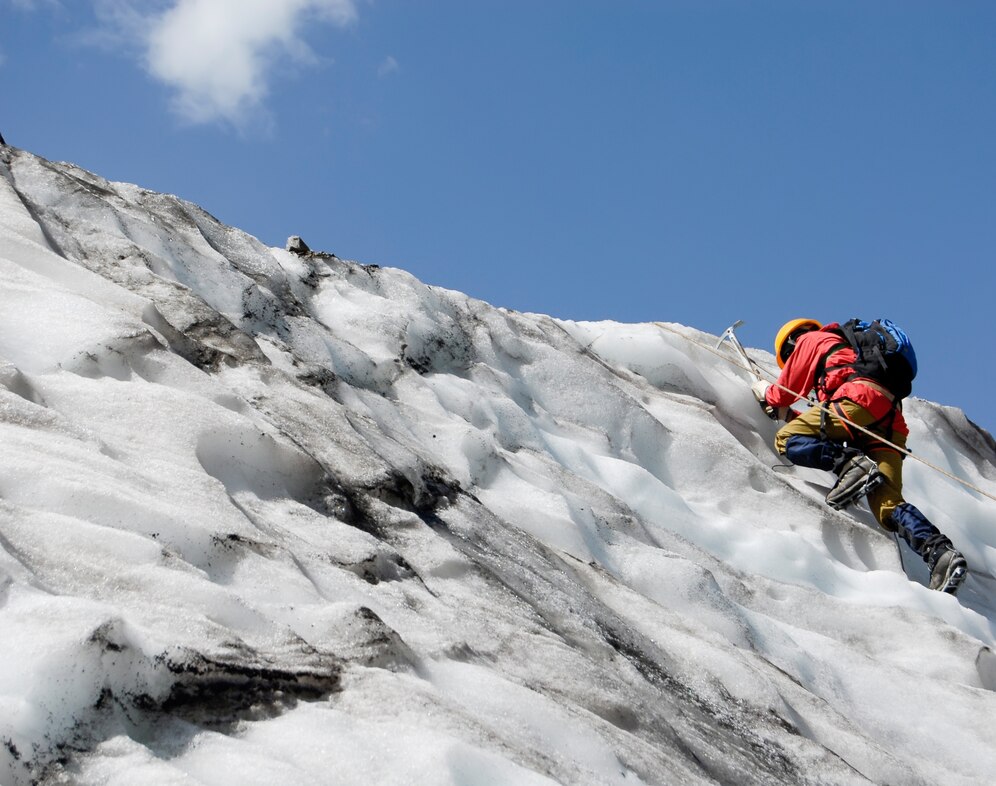
The height of Mount Everest is 29,032 feet, and it is the highest peak of the earth and the peak of human ambition. Its charm lies not only in its tremendous height but also in the sheer challenge and dignity associated with conquering it. As the final destination for climbers and adventurers around the world, Everest represents the culmination of mountaineering achievements. So, the question is: how long does it take to climb Mount Everest?
However, the journey to the top of Mount Everest is more complicated than just climbing. Understanding the time commitment involved in climbing this magnificent peak is very important for anyone considering this endeavor. The campaign demands not only physical endurance, but also greater preparedness, harmony, and a longer presence on the mountain. Commitment at this time is a fundamental aspect that affects every aspect of the climb, from planning and training to the overall success and safety of the expedition.
Preparation Before Climbing Mount Everest

Physical Training and Fitness
Mental Preparation
Gear and Equipment
Permits and Paperwork to Climb Mount Everest
Securing the necessary permits and completing required paperwork are fundamental steps in preparing for an Everest expedition. Climbers must obtain a range of permits, including the Nepalese or Tibetan government permits, which are required to climb from either side of the mountain. Additionally, expedition members often need to provide proof of prior mountaineering experience and undergo medical evaluations. Coordination with expedition organizers and adherence to regulations, such as fees and documentation, is essential for a smooth and lawful ascent. Proper preparation in this regard ensures compliance with legal requirements and helps avoid bureaucratic hurdles during the climb.
Journey to Base Camp

Travel to Nepal: Arriving in Kathmandu
Trek to Base Camp: Typical Duration and Key Stops
From Kathmandu, climbers embark on a multi-day trek to Everest Base Camp, which is situated at an altitude of approximately 5,364 meters (17,598 feet). The trek usually begins with a flight to Lukla, a small mountain airstrip. From Lukla, the journey to Base Camp covers roughly 65 kilometers (40 miles) and takes about 8 to 12 days, depending on the pace and weather conditions.
Acclimatization Process: Importance and Duration
Acclimatization is a vital component of the trek to Everest Base Camp. As climbers ascend, the oxygen levels decrease, and the body must adapt to the thinner air to avoid altitude sickness. The acclimatization process involves a combination of gradual ascent and rest periods. Climbers typically follow a “climb high, sleep low” strategy, where they ascend to higher altitudes during the day but return to lower elevations to sleep, which helps the body acclimate more effectively.
The duration of acclimatization varies from person to person, but it generally spans the entire trek to Base Camp and can include additional days spent at specific altitudes. The process helps to minimize the risks of altitude-related illnesses such as Acute Mountain Sickness (AMS), High Altitude Pulmonary Edema (HAPE), and High Altitude Cerebral Edema (HACE). Proper acclimatization is essential for ensuring that climbers are in optimal condition before attempting the final ascent to the summit.
Climbing Phases and Timeline

Base Camp to Camp 1: Initial Ascent and Acclimatization
The journey from Everest Base Camp (EBC) to Camp 1 marks the beginning of the serious climbing phase. The initial ascent involves moving through the treacherous Khumbu Icefall, a complex glacier formation filled with deep crevasses and shifting ice blocks. This section requires careful navigation and the use of fixed ropes. Climbers typically spend a few days ascending to Camp 1, situated at approximately 6,065 meters (19,900 feet). Acclimatization is crucial at this stage; climbers may make multiple trips up and down the mountain to adjust their bodies to the thinning air and to prepare for the higher camps. This phase also includes essential acclimatization climbs, often involving several nights spent at Camp 1 or in nearby locations to enhance physiological adaptation.
Camp 1 to Camp 2: Navigating the Khumbu Icefall
The ascent from Camp 1 to Camp 2 is a significant and demanding phase of the climb. Camp 2 is located at around 6,400 meters (21,000 feet) and is situated on a rocky moraine. Climbers must navigate the Khumbu Icefall again, but this time, the focus is on making a more extended ascent. The Icefall is known for its dynamic nature, with ice blocks and seracs that can shift unpredictably, making this section one of the most dangerous parts of the climb. The route through the Icefall is marked by fixed ropes and ladders, which climbers use to traverse crevasses and ice walls. After reaching Camp 2, climbers typically spend a few days acclimatizing, which includes ascending to higher altitudes and returning to Camp 2 to build their stamina and prepare for the next leg of the climb.
Camp 2 to Camp 4: Reaching the South Col
Camp 3 is situated on a narrow, exposed ledge at the base of the face, where climbers can rest and recover. The climb to Camp 3 is physically demanding, and proper acclimatization is essential to avoid altitude-related complications.
From Camp 3, climbers ascend to Camp 4, which is located at the South Col, approximately 7,920 meters (26,000 feet). The South Col is a high-altitude saddle between Everest and Lhotse and serves as the final camp before the summit push. The route involves crossing the “death zone,” where the oxygen levels are dangerously low. Climbers must be in peak physical condition and well-acclimatized to manage the severe conditions and potential weather changes. Camp 4 is a crucial staging point where climbers rest, prepare their summit gear, and review their plans for the final ascent. Due to the extreme conditions, climbers typically spend minimal time at Camp 4 to avoid exacerbating the effects of altitude sickness.
Camp 4 to Summit: The Final Push and Return
The final push from Camp 4 to the summit is the most challenging and exhilarating phase of the climb. Climbers typically start the ascent in the early hours to reach the summit by morning or early afternoon, depending on weather conditions and the climber’s pace. This final stretch covers the infamous Hillary Step, a technical rock face near the summit, and requires meticulous attention to safety and technique. The summit of Mount Everest is situated at 8,848 meters (29,032 feet), where climbers experience a brief but profound moment of triumph before beginning the descent. Due to the severe altitude and exhaustion, climbers must return to Camp 4 immediately after summiting. The descent is often as challenging as the ascent, requiring careful navigation and energy conservation. After returning to Camp 4, climbers make their way back to Camp 2 and eventually to Base Camp, completing the climb.
Factors Affecting Climb Duration

Weather Conditions: Impact of Weather on Climbing Schedule
Weather conditions on Mount Everest are notoriously unpredictable and can significantly impact the climbing schedule. The mountain’s weather is influenced by factors such as high winds, snowfall, and temperature fluctuations, all of which can create hazardous conditions. Storms and extreme cold can delay progress, force climbers to retreat, or even halt ascents entirely. Clear weather windows are crucial for summit attempts, as climbers need stable conditions to navigate the high-altitude routes safely. Weather can also affect the duration of acclimatization and rest periods, as climbers may need to wait for favorable conditions before moving between camps or attempting the summit.
Acclimatization Needs: Varying Acclimatization Periods
Acclimatization is essential for mitigating the effects of high-altitude sickness and is a critical factor affecting the climb’s duration. Each climber’s body adapts to the decreasing oxygen levels at its own pace, and therefore, the acclimatization period can vary widely. Some climbers may require additional days at various camps to properly adjust, while others might acclimate more quickly. The process typically involves ascending to higher altitudes and then returning to lower camps to allow the body to adapt. Inadequate acclimatization can lead to altitude-related illnesses, potentially prolonging the climb or necessitating an early descent.
Physical Fitness: How Fitness Levels Influence the Timeline
A climber’s physical fitness plays a crucial role in determining the overall duration of the climb. Climbers who are exceptionally fit and well-prepared tend to move more efficiently and recover more quickly from the physical demands of the ascent. They may also handle the physical stress of high-altitude climbing better, allowing them to progress through the camps more swiftly. Conversely, climbers who are less physically prepared may experience greater fatigue and slower progress, which can extend the duration of their climb. Fitness levels influence how climbers manage the physical challenges of the ascent and how effectively they can adapt to the extreme conditions on Everest.
Route Selection: Differences Between the South Col and North Ridge Routes
The choice of route—South Col (Nepal) or North Ridge (Tibet)—can also impact the duration of the climb. Each route presents unique challenges and variations in ascent time:
South Col Route:
The South Col route, starting from Nepal, is the most popular and well-established route to the summit. It involves navigating the Khumbu Icefall, ascending the Lhotse Face, and reaching the South Col before the final push to the summit. The South Col route typically takes about 6 to 8 weeks to complete, including acclimatization and rest periods. It is known for its fixed ropes and support infrastructure but still requires careful planning and timing due to the complexities of the Icefall and the high-altitude sections.
North Ridge Route:
The North Ridge route, starting from Tibet, offers a different set of challenges. It involves climbing the Tibetan side of Everest and includes ascending the North Col, traversing the Northern Face, and tackling the summit ridge. This route is less frequented and generally requires a longer expedition time, often around 7 to 9 weeks, due to its remote location and the need for additional logistical support. Climbers on this route face different weather patterns and logistical hurdles compared to the South Col route.
Average Timeframes

Typical Expedition Duration
An average Everest expedition typically spans around 8 to 10 weeks, encompassing the entire journey from Base Camp to the summit and back. This timeframe includes the trek to Base Camp, the acclimatization process, the various climbing phases, and the descent. Climbers usually spend about 4 to 6 weeks at Everest Base Camp and the higher camps, preparing and waiting for a suitable weather window for the summit attempt. The actual time spent climbing, from Base Camp to the summit and back, generally takes around 6 to 8 days, though this can vary based on weather, acclimatization, and individual climbing speed.
Breakdown of Each Phase
Trek to Base Camp (5-7 Days)
The trek from Lukla to Everest Base Camp covers approximately 65 kilometers (40 miles) and takes about 5 to 7 days. This includes acclimatization stops at key villages such as Namche Bazaar, Tengboche, and Dingboche. The duration may vary depending on the pace of the trek and acclimatization needs.
Base Camp to Camp 1 (2-3 Days)
The initial ascent from Base Camp to Camp 1 involves navigating the Khumbu Icefall. This phase typically takes 2 to 3 days, including acclimatization trips. Climbers may spend a night or two at Camp 1 before descending to Base Camp to recover.
Camp 1 to Camp 2 (2 Days)
The climb from Camp 1 to Camp 2 involves traversing the Khumbu Icefall again. This segment generally takes 1 to 2 days. Climbers may spend additional time at Camp 2 for further acclimatization before proceeding.
Camp 2 to Camp 3 (1-2 Days)
The ascent from Camp 2 to Camp 3 involves climbing the Lhotse Face and reaching the high-altitude Camp 3. This phase usually takes 1 to 2 days. Climbers often spend a night at Camp 3 to acclimate before descending to Camp 2
Camp 3 to Camp 4 (1 Day)
The climb from Camp 3 to Camp 4 involves reaching the South Col. This section generally takes 1 day, with climbers spending a brief period at Camp 4 to prepare for the final summit push.
Camp 4 to Summit and Back to Camp 4 (2-4 Days)
The final push from Camp 4 to the summit typically takes around 6 to 12 hours, depending on weather and climbing conditions. Climbers usually start the ascent in the early morning to reach the summit by mid-day. The return to Camp 4 from the summit takes additional hours. This phase often extends over 2 days to allow for sufficient rest and recovery at Camp 4.
Descent from Base Camp (2-3 Days)
The descent from Everest Base Camp back to Lukla generally takes 2 to 3 days, similar to the initial trek in. This period allows climbers to descend safely and recover from the demanding climb.
Conclusion
Climbing Mount Everest is a monumental endeavor that demands meticulous planning, rigorous physical and mental preparation, and a deep understanding of the challenges involved. From the initial trek to Base Camp through the various climbing phases and the ultimate summit push, each stage of the expedition plays a critical role in achieving a successful ascent.
Encouragement and Final Thoughts:

For aspiring climbers, the journey to Mount Everest represents both a profound challenge and an extraordinary achievement. It requires not only exceptional physical fitness and mental resilience but also a deep respect for the mountain’s inherent risks and unpredictability. Each phase of the expedition, from preparation to the final summit push, is a testament to human determination and endurance.
As you prepare for your Everest adventure, embrace the journey with patience and perseverance. Understand that success on the mountain is not solely defined by reaching the summit but also by the preparation, resilience, and experiences gained along the way. Remember to prioritize safety, respect the mountain, and celebrate the progress and achievements, no matter how small.
May your preparation be thorough, your journey be safe, and your climb be fulfilling. The path to Everest is as much about the personal growth and learning experienced along the way as it is about standing atop the world’s highest peak.
Well, if you are wondering about an ecstatically sublime summit, then you are at the right place. Just leave a message to fulfill your mammoth dream.

Pingback: Where is Skardu Located? 17 Reasons to Visit Skardu
Hey there! Do you know if they make any plugins to help with SEO?
I’m trying to get my website to rank for some targeted
keywords but I’m not seeing very good success.
If you know of any please share. Kudos! I saw similar art here:
Eco bij